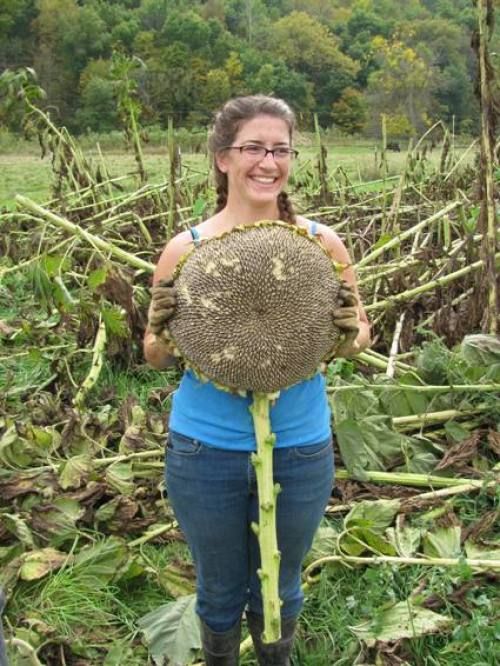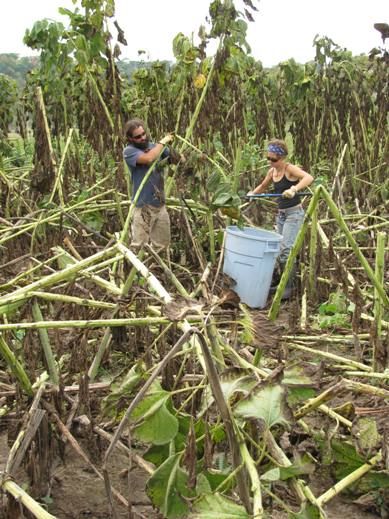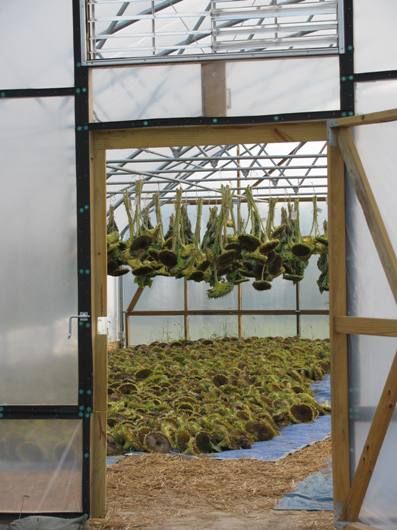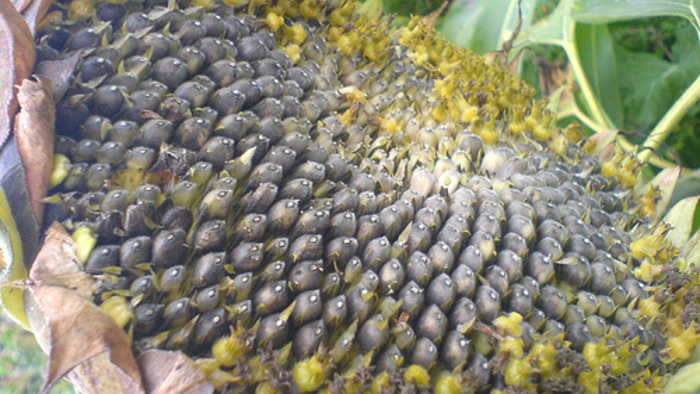
This week at Heritage Farm in Decorah, Iowa, we’re harvesting sunflowers. This has some of us wondering about the whole sunflower seed business. Of course here at Seed Savers, we harvest seed to grow, but we’re curious about those who harvest seed to eat. Which brings us to baseball, where players chewing sunflower seeds has become a ubiquitous part of the game.
If you’ve watched a major league baseball game recently, it’s obvious seeding has replaced chewing tobacco as the healthy chew of choice. In a single season, the Cleveland Indians will go through 12 cases of sunflower seeds. The Detroit Tigers have a “Who likes sunflower seeds?” discussion on their forum. Here fans argue the best brands for eating, the virtues of BBQ and Ranch flavor, and plot how to steal seeds from their wife’s flower beds. Even The Washington Post devoted an entire feature to the classic bird food, “The Great Sunflower Seed Shortage of 2005.”
For baseball players, sunflower seeds have replaced tobacco. But this craze is nothing new. North and South American Indians have used mature sunflower leaves as a tobacco substitute for hundreds of years. Helianthus annuus is native to North America, and many of these old varieties are still around. The Tarahumara White Sunflower was originally grown in the Sierra Madres of Northern Mexico. The Arikara Indians in the Dakotas, and the Seneca Nation in New York, grew self-titled varieties that are now offered commercially.
Sunflower history
When Helianthus found its way across the Atlantic, Russians began to grow sunflower seeds commercially for their oil. And like many seeds here at Heritage Farm, new varieties of Helianthus eventually made their way back to North America from all corners of the world: Mammoth Russian and Rostov from Russia, Taiyo from Japan, Italian White, Hungarian Black Seeded, and an old Turkish variety called Supermane, to name a few. (Click on the link to view all Seed Savers sunflower varieties.)
This week, the garden crew harvested their way through a jungle of Titan sunflowers, a seed we describe in our catalog as: “One of the tallest-growing, biggest-headed and largest-seeded varieties available to gardeners. This is one for impressing your neighbors and winning awards at county fairs.” And the proof was in this Titan forest the garden crew was clear-cutting.
When and How to Harvest Sunflower Seeds
Sunflowers are ready to harvest when the back of the flower has turned yellow, which is not so easy to determine when sunflowers are 14 feet in the air. After double checking to make sure there are no co-workers standing behind, the crew will pull on the stalk until it snaps. Once it snaps the weight of the flower head takes over and timber! The giant head is then cut off with a pair of loppers, collected on a flatbed, and taken back to the high tunnels to dry.
Next week we’ll be drying seed. Out in the field, the garden crew hand-picked the biggest flower heads with the most beautiful seeds for seed stock. We’ll save this seed to grow next year. Part of the stem was left on these flower heads so that we can hang them to dry. The hundred or so remaining heads are spread out on a screen. It’s essential to maintain continuous air flow, so that the flower heads don’t rot. But the biggest challenge to drying sunflower seed is keeping mice and birds away. We keep birds away by completing the drying process indoors. Unfortunately for us, the same time of year to harvest sunflowers is also the same time of year mice are trying to find their way indoors. Setting traps helps, but only if you can bait them with something they like more than sunflower seeds (which they love). We use raisins, a fruity enticement that seems to work.
Fine Gardening Recommended Products

Chapin International 10509 Upside-Down Trigger Sprayer
Fine Gardening receives a commission for items purchased through links on this site, including Amazon Associates and other affiliate advertising programs.

Ashman Garden Cultivator (1Pack)
Fine Gardening receives a commission for items purchased through links on this site, including Amazon Associates and other affiliate advertising programs.




















Comments
Log in or create an account to post a comment.
Sign up Log in